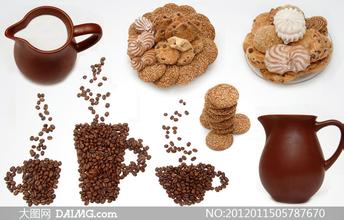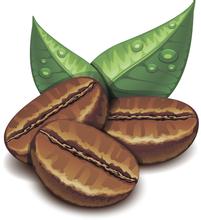What are the characteristics of coffee beans in the producing area of coffee beans
Coffee Origin Coffee is mainly produced in Africa. 1. The Story of the Shepherd
Legend has it that around the tenth century AD, on the Ethiopian plateau of Africa, there was a shepherd named Karl. One day he suddenly looked excited and excited when he saw the goat. He thought it was strange, and then after careful observation, he found that the sheep were excited after eating some kind of red fruit. Carl tasted some curiously, and found that he was refreshed and excited after eating, so he picked some of the incredible red fruit home and distributed it to the locals, so its magical effect spread.
II. Arab monks
Legend has it that Shek, the chief expelled by his people for crime, was deported from the mountains of Yemen in 1258. Omar, exiled far away.
Vasaba (in Arabia), when he was walking on the mountain exhausted, he found that the birds on the branches made a very sweet cry after pecking at the fruit of the tree. So he boiled the fruit with water, but unexpectedly sent out a rich and attractive fragrance, and the original feeling of exhaustion was eliminated after drinking, full of vitality. Later, Omar collected many of these magical fruits, and when someone got sick, she made the fruit into soup for them to drink, refreshing them. Because he did good everywhere and was loved by believers, his sins were soon forgiven, and when he returned to Mocha, he was revered as a saint for finding this fruit. It is said that the magic cure at that time was coffee. [1]
Four famous bean editors
It is said that the origin of coffee plant can be traced back to millions of years ago, in fact, the real age when it was discovered can no longer be tested. It is only said that coffee is Ethiopia.
A shepherd named Kaldi in the subhighlands became very lively and energetic when he discovered that his sheep had inadvertently eaten the fruit of a plant. All historians seem to agree that the birthplace of coffee is the Kaffa region of Ethiopia. But the earliest people who planned to grow and eat coffee were Arabs, and the name coffee is thought to come from the Arabic "Qahwah", which means plant drink.
Coffee for drinking is said to have begun at the beginning of the eleventh century, and the record can be seen in ancient Arab documents. Before that, coffee beans were dried and boiled in the Arab region and used as stomach medicine, but it was later learned that coffee also had a refreshing effect, coupled with the strict Muslim commandments that forbade believers from drinking alcohol. Believers drank coffee juice from roasting as an exciting drink instead of alcohol, and it was said that locals knew how to roast raw beans after the 13th century.
In the 16th century, coffee was gradually introduced into Europe through Venice and the port of Marseilles in the name of "Arabian wine". The custom of drinking coffee among Europeans was gradually spread by Italian Venice merchants in doing business in the 17th century, and Europe appeared in Venice.
The first coffee shop-Bottegadel Caffe. Over the past 400 years, the drinking habit of coffee has not only spread from the West to the East, but has even become an unstoppable trend.
Coffee was planted in large numbers by Arabs in the 12th and 3rd centuries, and the world's first coffee shop was born in Damascus in the Middle East in the 16th century (1530). In just a few years, there were different numbers of coffee shops in more than 200 cities throughout the empire, from the ancient Constantinople to the Caucasus, from the Persian Gulf to Budapest, and the roads connecting these cities across the desert wilderness were dotted with mobile coffee tents to serve a steady stream of business travelers and troops. Coffee also spread to Europe in the same century, when coffee was taken to western countries with the Turks on a western expedition to Austria. Unexpectedly, it soon captured the hearts of Europeans. According to records, a packet of samples sent from Venice to the Netherlands in 1596 was the earliest coffee bean seen by Europeans north of the Alps. Legend has it that coffee was so rare in Western Europe that at first there was a joke that German housewives used chicken soup to make coffee. According to scholars' speculation, in the prosperous import and export trade of seasoning raw materials at the end of the 16th century, many coffee beans from the east began to enter Europe through Venice with developed economy and trade.

Important Notice :
前街咖啡 FrontStreet Coffee has moved to new addredd:
FrontStreet Coffee Address: 315,Donghua East Road,GuangZhou
Tel:020 38364473
- Prev

Production method of coffee beans the production process of coffee beans
First of all, the coffee bean is a red coffee fruit that is picked from the coffee tree and ripe by fermenting flat beans and round beans, as shown in the figure. The pale green core with a little blue in the middle is the coffee bean. In general, the core of a coffee fruit is oval. When two kernels are opposite to each other, flat beans are formed; sometimes a single kernel grows and forms.
- Next

How coffee beans should be cooked to drink coffee origin coffee introduction
Before making coffee beans, you should buy coffee tools if you make them by hand, you need hand-washed pot filter paper and so on. 1. Raw bean processing: 1. Picking is divided into mechanical picking and manual picking. Mechanical picking is suitable for coffee gardens where the land is flat and planted in a large area. Brazil uses mechanical picking coffee most frequently in the world. This method is characterized by low cost and high efficiency, but the coffee beans picked vary widely.
Related
- Does Rose Summer choose Blue, Green or Red? Detailed explanation of Rose Summer Coffee plots and Classification in Panamanian Jade Manor
- What is the difference between the origin, producing area, processing plant, cooperative and manor of coffee beans?
- How fine does the espresso powder fit? how to grind the espresso?
- Sca coffee roasting degree color card coffee roasting degree 8 roasting color values what do you mean?
- The practice of lattes: how to make lattes at home
- Introduction to Indonesian Fine Coffee beans-- Java Coffee producing area of Indonesian Arabica Coffee
- How much will the flavor of light and medium roasted rose summer be expressed? What baking level is rose summer suitable for?
- Introduction to the characteristics of washing, sun-drying or wet-planing coffee commonly used in Mantenin, Indonesia
- Price characteristics of Arabica Coffee Bean Starbucks introduction to Manning Coffee Bean Taste producing area Variety Manor
- What is the authentic Yega flavor? What are the flavor characteristics of the really excellent Yejasuffi coffee beans?

